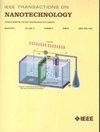Spatial-SpinDrop: Spatial Dropout-Based Binary Bayesian Neural Network With Spintronics Implementation
IF 2.1
4区 工程技术
Q3 ENGINEERING, ELECTRICAL & ELECTRONIC
引用次数: 0
Abstract
Recently, machine learning systems have gained prominence in real-time, critical decision-making domains, such as autonomous driving and industrial automation. Their implementations should avoid overconfident predictions through uncertainty estimation. Bayesian Neural Networks (BayNNs) are principled methods for estimating predictive uncertainty. However, their computational costs and power consumption hinder their widespread deployment in edge AI. Utilizing Dropout as an approximation of the posterior distribution, binarizing the parameters of BayNNs, and further implementing them in spintronics-based computation-in-memory (CiM) hardware arrays can be a viable solution. However, designing hardware Dropout modules for convolutional neural network (CNN) topologies is challenging and expensive, as they may require numerous Dropout modules and need to use spatial information to drop certain elements. In this paper, we introduce MC-SpatialDropout, a spatial dropout-based approximate BayNNs with spintronics emerging devices. Our method utilizes the inherent stochasticity of spintronics devices for efficient implementation of the spatial dropout module compared to existing implementations. Furthermore, the number of dropout modules per network layer is reduced by a factor ofSpatial-SpinDrop: 利用自旋电子学实现基于空间剔除的二元贝叶斯神经网络
最近,机器学习系统在自动驾驶和工业自动化等实时、关键决策领域大放异彩。这些系统的实现应通过不确定性估计避免过度自信的预测。贝叶斯神经网络(BayNNs)是估计预测不确定性的原则性方法。然而,其计算成本和功耗阻碍了它们在边缘人工智能领域的广泛应用。利用 Dropout 作为后验分布的近似值,对 BayNNs 的参数进行二值化,并进一步在基于自旋电子学的计算内存(CiM)硬件阵列中实现它们,不失为一种可行的解决方案。然而,为卷积神经网络(CNN)拓扑设计硬件Dropout模块具有挑战性且成本高昂,因为它们可能需要大量Dropout模块,并需要使用空间信息来丢弃某些元素。在本文中,我们介绍了 MC-SpatialDropout,这是一种基于空间剔除的近似 BayNNs,采用了自旋电子学新兴器件。与现有的实现方法相比,我们的方法利用了自旋电子器件固有的随机性,从而高效地实现了空间剔除模块。此外,与相关工作相比,每个网络层的剔除模块数量减少了 9 美元(times$),能耗减少了 300 美元(times$),同时仍然实现了可比的预测性能和不确定性估计。
本文章由计算机程序翻译,如有差异,请以英文原文为准。
求助全文
约1分钟内获得全文
求助全文
来源期刊

IEEE Transactions on Nanotechnology
工程技术-材料科学:综合
CiteScore
4.80
自引率
8.30%
发文量
74
审稿时长
8.3 months
期刊介绍:
The IEEE Transactions on Nanotechnology is devoted to the publication of manuscripts of archival value in the general area of nanotechnology, which is rapidly emerging as one of the fastest growing and most promising new technological developments for the next generation and beyond.
 求助内容:
求助内容: 应助结果提醒方式:
应助结果提醒方式:


